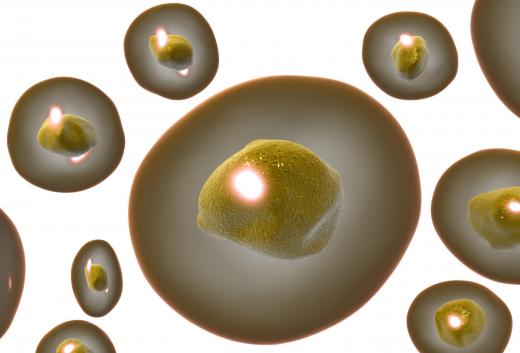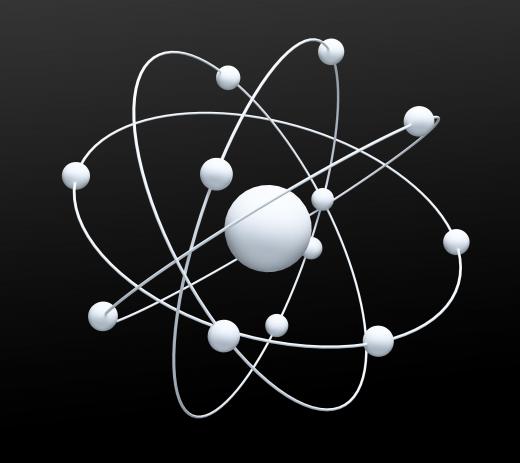What is a Nucleus?
 Mary McMahon
Mary McMahon
The term “nucleus” is used in several different ways in the sciences, although all cases reference a critical structure found at the center of something. In fact, the word “nucleus” means “kernel” or “core,” and it comes from an Ancient Greek word meaning “nut.” As a general rule, the nucleus is so critical that the surrounding structure cannot survive without it.
In biology, the nucleus is a small structure located inside the cells of eukaryotic organisms. The cell nucleus is actually one of the defining characteristics of eukaryotes, as the structure allows cells and organisms to reach a very high level of complexity. This structure without the cell contains the organism's DNA, and the nucleus is responsible for regulating gene expression, duplicating DNA as needed, and passing on hereditary traits, in the case of egg and sperm cells.

This structure was identified in cells in the early 1800s, when microscopes had finally progressed enough to allow scientists to observe the detailed and complex interiors of cells. Like other parts of the cell, nuclei are involved in the cell cycle, which includes reproduction of the cell and eventual cell death as the various components of the cell age. In stained microscope slides, the cell nuclei are usually very easy to see, thanks to the fact that DNA can be stained with a specific color to make it stand out, highlighting this structure within the cell.

In physics, the nucleus is the core of an atom. Atomic nuclei are extremely dense, containing most of the weight of the atom in the form of particles known as protons and neutrons. Electrons orbit around the atomic nucleus. Depending on the arrangement of particles within the atom, it may be extremely stable, or it may be unstable, in which case the atom can gain or lose particles, generating radioactivity. The application of “nucleus” to physics dates to the early 20th century, when physicists began exploring atoms and elements with the benefit of new technology which made such study possible.

Because nuclei are associated with the “control center” or “core” in the sciences, people sometimes refer to central structures or events as nuclei. For example, someone might say that the boiler room is the “nucleus” of the campus heating system. The older sense of “kernel” or “seed” may also be referenced when people discuss key items or events which lead to larger happenings, such as a piece of art which forms the foundation of a collection, or a protest which triggers widespread social awareness of a political issue.
AS FEATURED ON:
AS FEATURED ON:













Discussion Comments
@BigBloom
String theory and DNA all point to the fact that the basic fabric of our reality is an immense force which transcends all things. In my opinion, science is beginning to prove the existence of God.
Understanding the anatomy of a cell is vitally important for any study of biology. Cells form the basic building blocks of life, and are composed and run by various pieces of data. As science progresses we are beginning to recognize how immensely complex and incomprehensible the fabric and detail of life is.
The nucleus makes the decisions of how things are to be run. It doesn't do this by some conscious process or human free will, but by transmitting the data that is stored in the form of Nucleic Acid. The RNA and DNA which come from the nucleus make the cell function, and work to produce a cohesive entirety of a living organism.
In a lot of science fiction novels I've read, the word "nucleus" has also been used to define the brain or center of a group of people or organization. In other words, whatever group, person, or thing that did the decision-making, thinking, and general giving of orders was referred to as the nucleus of the structure.
Post your comments